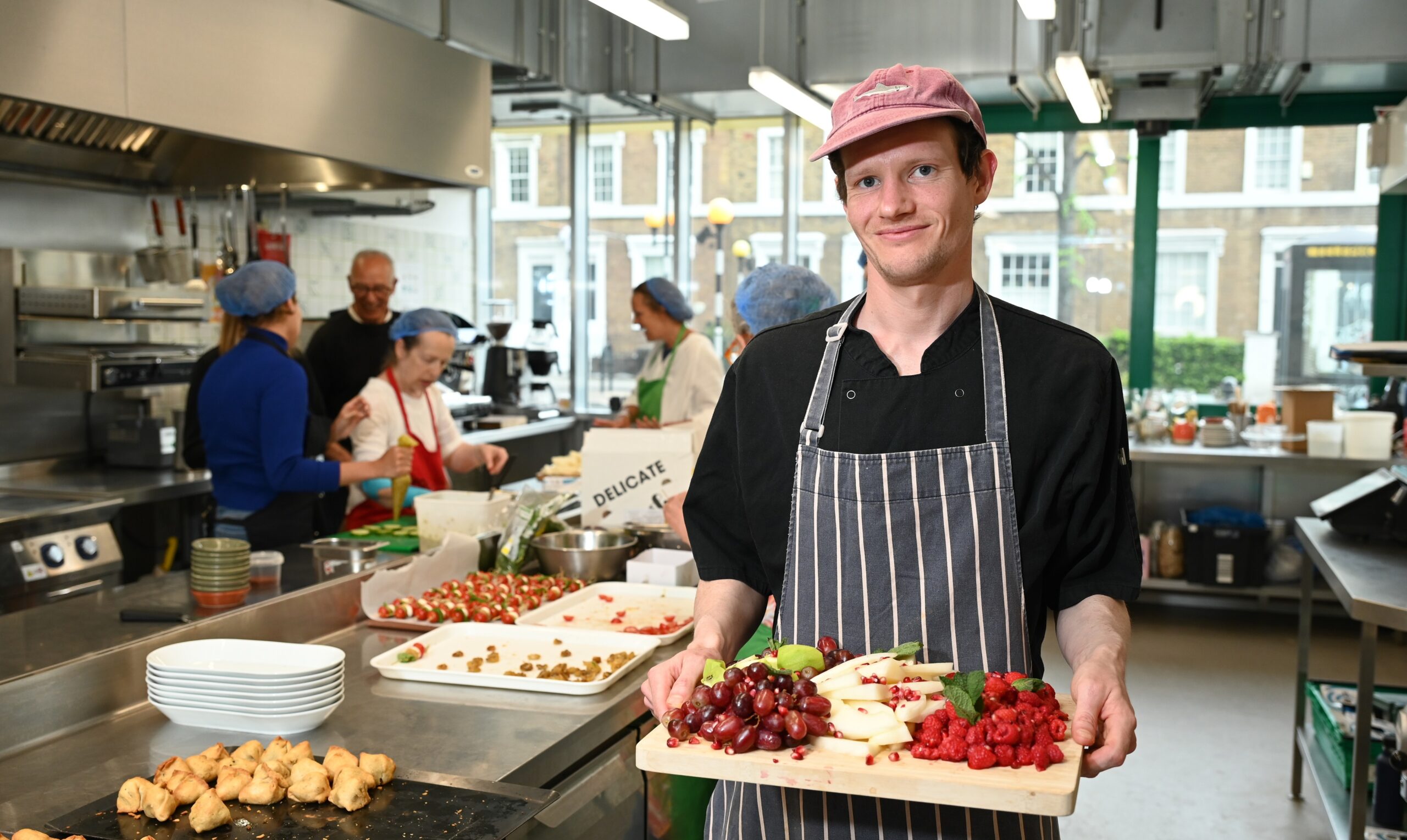Touch upon this story Remark Reward Article Share
At first, God created the heaven and the earth. A number of days later, in response to Genesis, people have been added to the earth, and we proceeded to make a hash of it. There are 8 billion of us, all of us must eat, and our weight loss plan (amongst different issues) is wreaking havoc on our planet. British journalist George Monbiot needs to present us a do-over, and he has some options in his ebook, “Regenesis.”
For a journalist on the food-and-planet beat (me) to write down a few ebook by one other journalist on the food-and-planet beat (Monbiot) is, to some extent, an train in worldview-matching. Clearly, his ebook is sweet to the precise extent he agrees with me! Which, on this case, is possibly 70 %. However cheap individuals can disagree in regards to the remaining 30 %, and that’s not why I need to deal with the ebook.
I need to deal with it as a result of Monbiot writes extensively and persuasively about what’s arguably crucial and underappreciated facet of meals’s impact on local weather: land use. “The local weather prices of farming mirror its land prices,” he writes, and our central problem is “to supply extra meals with much less farming.”
Commercial
Greenhouse gases from meals are someplace between 1 / 4 and a 3rd of our annual complete (Monbiot cites the upper estimate), and 1 / 4 of that comes from land-use adjustments. Traditionally, Monbiot factors out, citing the work of soil scientist Rattan Lal, the conversion of land within the industrial age has been accountable for 190 billion tons of carbon being launched into the ambiance, in comparison with 490 billion tons for fossil fuels.
Our greatest alternative to scale back food-related greenhouse gases is to search out methods to feed a rising inhabitants with out increasing meals’s land footprint and, ideally, to liberate some land to return to its pre-agricultural, carbon-storing state.
The most important consumer of land, by a rustic mile, is cattle (with an help from sheep and goats). Proper now, about half of the world’s liveable land is used to feed us, and three-quarters of that’s for livestock. Worldwide, 8.2 billion acres are used for grazing, in comparison with 3.5 billion for crops. Monbiot makes the case that re-wilding that land, and switching from animals to plant protein, could be one of the simplest ways to scale back the carbon affect of our weight loss plan. (He additionally addresses the difficulty of managed grazing to sequester carbon. I’ve, too, so I gained’t rehash it right here. The web is that the numbers don’t pan out.)
Commercial
“Elevating a kilogram of beef protein releases 113 occasions extra greenhouse gases than rising a kilogram of pea protein,” Monbiot writes, utilizing Our World in Information’s evaluation. “Pasture-fed beef and lamb have by far the worst impacts; three or 4 occasions worse … than beef raised intensively on grain, dangerous as that is.”
I’m not as anti-beef as Monbiot is. I believe there are locations the place producing high-quality meals on low-quality land is essential, particularly within the growing world, the place cattle aren’t simply meals sources but additionally function farm labor and transportation. Even right here in america, the place beef consumption continues to extend regardless of all of the shouting from the rooftops, there are locations the place cattle can be utilized to revive degraded land.
However, even in the event you’re consuming beef from these cattle (and also you in all probability aren’t), you might want to eat much less beef as a result of we’d like that beef to feed as many of us as potential to dump demand from different, extra harmful sorts of beef.
The land-use concern doesn’t finish with grazing, although. Cropland doesn’t get a cross.
As industrialized agriculture depletes soils and harms the surroundings, and local weather change threatens our capability to develop meals, the problem is to enhance environmental outcomes and adapt to altering situations — with out sacrificing yields. We have to “radically to alter the way in which we develop vegetation,” Monbiot writes.
Commercial
However a humorous factor occurs once you exit on this planet speaking in regards to the significance of crop yields. You run into individuals who affiliate the very concept of yield with the excesses of business ag, and who’re dedicated to nonindustrial techniques even within the face of a yield penalty. Typically, these individuals name you names. Ahem.
The nonindustrial system mentioned most frequently is, in fact, natural. Whereas Monbiot acknowledges its benefits (the farms are typically extra numerous, they use fewer pesticides and antibiotics), the yield penalty is, for him, a dealbreaker. “The worldwide common hole between natural and standard yields is, in response to totally different estimates, someplace between 20 % and 36 %.” Which means you want between 25 and 50 % extra land to develop the identical quantity of meals.
Okay, so if natural isn’t the reply, what’s?
Commercial
That’s the onerous half. Monbiot is completely proper {that a} plant-based weight loss plan (he’s vegan; I’m not) is a local weather win, however “Regenesis” additionally has supply-side options.
For meat, Monbiot seems to be to precision fermentation to interchange it. I certain hope that method, along with different nonmeat meat replacements (cultivated, plant-based, hybrids of all of these), makes a dent in meat consumption, however I’m not fairly at his degree of optimism. That is, in fact, a crystal ball concern, and I hope Monbiot’s is extra correct than mine.
The trail to extra meals with much less farming is rockier for vegetation. I’m completely with him on many of the row-crop options he talks about: three cheers for no-till, cowl crops and complicated rotations. The issue is that they don’t reliably sequester extra carbon or enhance yields, regardless that all of them enhance some environmental outcomes. And his different options, fascinating as they’re, don’t appear prone to remedy the issue.
Commercial
Take Kernza, a perennial wheatgrass. I’m passionate about perennial grains, particularly rice, which is already being grown in China, and has yields akin to annual varieties. However, after spending most of a ebook writing about extra meals with much less farming, Monbiot provides solely a pair sentences to the truth that Kernza yields are about one-quarter that of wheat. “The breeders hope to match wheat yields inside thirty years.”
This, on the heels of dismissing Tim Ashton, a grower of heritage wheat, for his low yields, regardless of soil and biodiversity enhancements. Ashton doesn’t get 30 years’ grace.
On the vegetable entrance, Monbiot profiles a captivating farmer, Iain Tolhurst, who has created a exceptional 17-acre farm out of land that’s 40 % stone. He calls his method “stockfree natural” and makes use of virtually no off-farm inputs. A lot of the work is completed by hand, some by an “historic tractor.” He grows 100 sorts of greens, and his yields meet or exceed these of typical farms.
However he employs 12 individuals in peak season, takes two days off a yr, and nets about $90 every week. The farm exists solely as a result of the pleasant nobleman-landlord needs his land to develop meals.
My husband and I’ve a small oyster farm that we’ve actively labored for a decade, and if it required full-time onerous labor to make $5,000 a yr, no oysters could be forthcoming. I believe most farmers would say the identical. To be sustainable, farms must be worthwhile. And, possibly as a result of I’ve accomplished a number of it, I believe backbreaking guide labor is one thing we should always work to reduce.
Commercial
The meh-ness of the options Monbiot floats isn’t as a result of there are higher ones that he missed. It’s as a result of it is a very onerous downside, which he acknowledges. “There are not any excellent options in an imperfect world,” he says. Amen. However a lot of farmers are making a lot of fascinating makes an attempt, and Monbiot’s ebook makes a robust case that, as we consider them, land use must be a high precedence.
Meantime, if you wish to cut back the local weather affect of your weight loss plan, however aren’t ready to go full-blown vegan, eat much less beef, waste much less meals, and eat extra grains, legumes, tubers and tree crops.
Throw in a couple of oysters, and consider me.
Reward this text Reward Article


